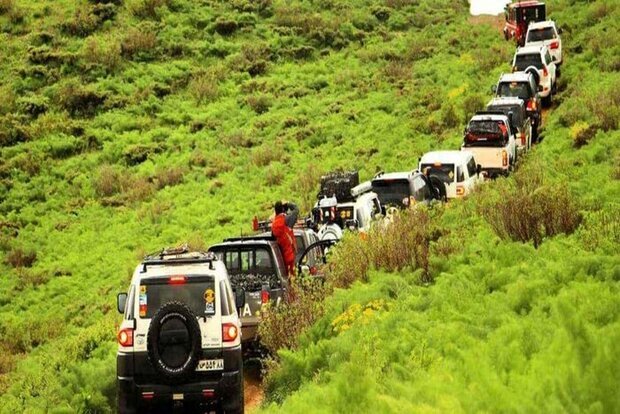Off-road vehicles, unlicensed tours banned from entering Abr forest

“The entry of off-road vehicles and [package] tours without official permission to the desert and forest areas, especially Hyrcanian Abr forest, is prohibited,” Mehr quoted Morteza Nazari as saying on Sunday.
Pointing to the problems caused by off-road vehicles and unauthorized tours in this area, the official said: “The ban is enforced to prevent further damage to the environment of this areas and to prevent social problems.”
Abr forest, which is a portion of the UNESCO-registered Hyrcanian Forests, has its own protection criteria that should be observed, the official said.
“Any damage to this natural property, including burning plants, cutting down trees, cutting bushes, destroying vegetation and bringing in farm livestock, etc. is considered a violation and is subject to legal prosecution.”
Arranging the entry of licensed off-road vehicles and determining predetermined routes to prevent damage to Abr forest are among the activities carried out to protect this World Heritage as much as possible, he concluded.
Abr (meaning “Cloud”) forest is situated almost on the border of Semnan and Golestan provinces and is known by this name because most of the time the space of this forest is covered by an ocean of clouds. In this forest, the clouds are so close to the trees that one may imagine walking through the clouds.
The woodland might be investigated through the mists and is viewed as perhaps of the most stunning regular scene in Iran by numerous sightseers. Because of the perfect and lavish nature of these woods, it is difficult to accept that its southern parts are lined by the somewhat infertile Khar Turan National Park.
According to the UN cultural body, Hyrcanian forests form a unique forested massif that stretches 850 km along the southern coast of the Caspian Sea. The history of these broad-leaved forests dates back 25 to 50 million years when they covered most of this Northern Temperate region.
These ancient forest areas retreated during the Quaternary glaciations and then expanded again as the climate became milder. Their floristic biodiversity is remarkable: 44% of the vascular plants known in Iran are found in the Hyrcanian region, which only covers seven percent of the country. To date, 180 species of birds typical of broad-leaved temperate forests and 58 mammal species have been recorded, including the iconic Persian Leopard.
AM
Leave a Comment